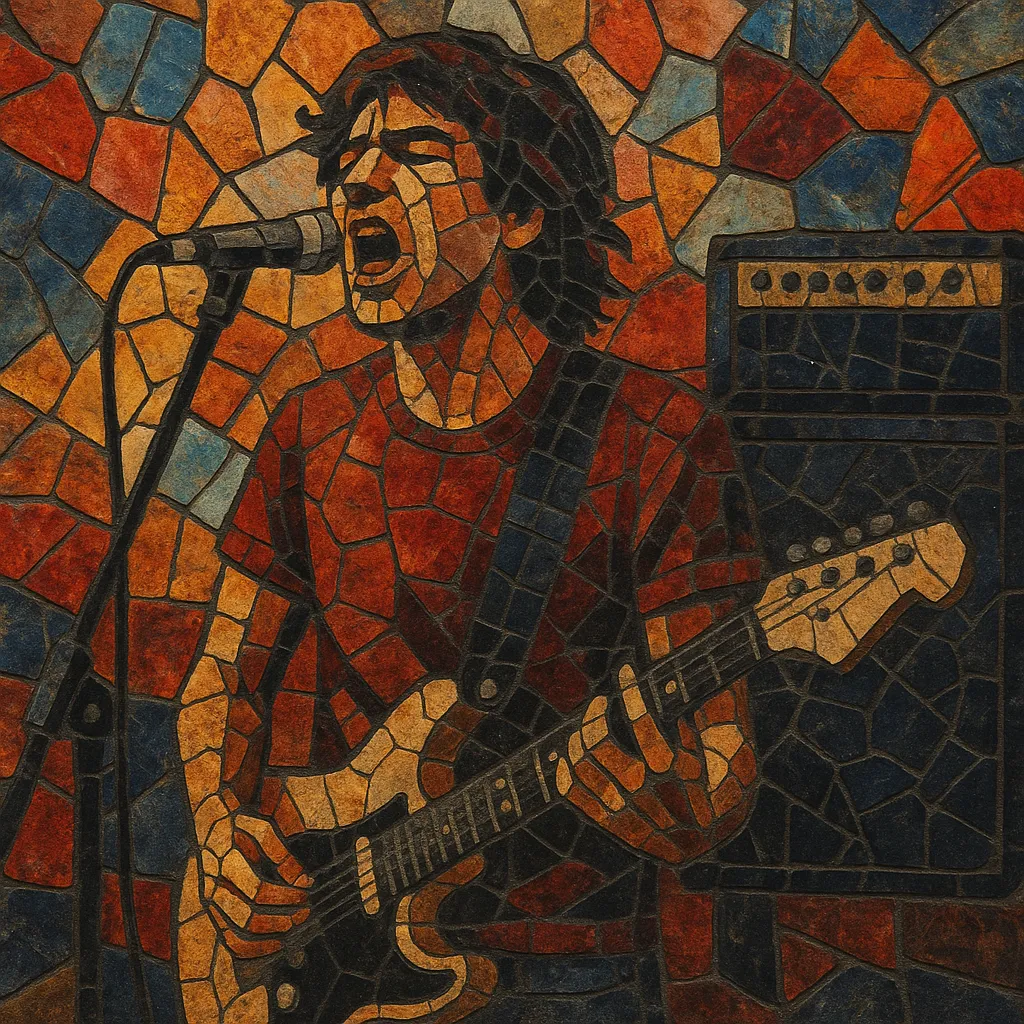Rock en español is the umbrella term for rock music performed in Spanish across Latin America and Spain.
It adapts the attitude, instrumentation, and songwriting of Anglo-American rock—electric guitars, bass, drums, and hook-driven choruses—while foregrounding Spanish lyrics and local themes. The style ranges from 1960s beat- and garage-influenced bands to 1970s blues/psychedelia and the punk, new wave, and pop-rock explosions of the 1980s and 1990s. Lyrically it moves from social critique and urban realism to romance and introspection, often reflecting the political and cultural realities of Spanish-speaking countries.
Rock en español emerged as Spanish-speaking musicians began to compose original rock songs in their own language rather than covering Anglo hits. In Argentina, Los Gatos’ 1967 single “La balsa” is often cited as a foundational Spanish-language rock hit, while Mexico, Spain, Peru, and Chile developed parallel beat, surf, and garage scenes. The choice to write in Spanish marked a cultural shift, asserting local identity within a global rock sound.
Through the 1970s, artists in Argentina, Mexico, and elsewhere fused blues-rock and psychedelia with regional sensibilities. Scenes developed under varying political climates, and lyrics frequently encoded social commentary. Albums and live circuits helped solidify a core audience committed to Spanish-language rock as a distinct cultural movement.
The 1980s brought a massive surge. In Spain, La Movida Madrileña powered new wave and post-punk bands; across Latin America, the “Rock en tu idioma” campaigns amplified Spanish-language rock on radio and TV. Bands modernized with punk energy, synths, and pop sheen, achieving national and regional stardom and creating a transnational market for Spanish-language rock.
The 1990s saw international visibility. Bands from Argentina, Mexico, Chile, and Spain toured widely, released major-label albums, and crossed into MTV and festival circuits. Stylistically, groups blended rock with ska, reggae, folk, and alternative/indie influences, broadening the sound palette while retaining Spanish lyrics and narratives rooted in local realities.
Rock en español diversified alongside indie and alternative movements, digital distribution, and cross-genre experimentation. While pop urbano and other styles rose commercially, rock in Spanish remains a vital live and recording culture, with legacy acts continuing to tour and new bands innovating with indie, electronic, and Latin folk elements—all within a Spanish-language rock framework.
Use a classic rock setup: two electric guitars (one rhythm, one lead), electric bass, and a drum kit. Add keyboards or synthesizers for new wave/alternative colors, and occasional brass or acoustic guitars for ska/folk inflections.
Start with straight rock beats (backbeat on 2 and 4). Incorporate punk drive for urgency, or add reggae/ska offbeats and Latin rhythmic accents (e.g., syncopated guitar upstrokes) when appropriate. Tempos can range from mid-tempo anthems to brisk, danceable numbers.
Build progressions around I–V–vi–IV or ii–V–I variants for pop-rock appeal. Introduce modal mixture or borrowed chords for color. Lead lines favor melodic guitar hooks and singable motifs; choruses should resolve strongly to the tonic to invite audience sing-alongs.
Write in Spanish with clear diction and memorable refrains. Topics span urban life, love, social critique, identity, and generational experience. Aim for concise, image-rich verses leading to big, repeatable choruses that connect in live settings.
Guitars often use chorus, delay, or overdrive, depending on whether the track leans new wave, alternative, or hard rock. Keep vocals prominent to foreground Spanish lyrics. Layer gang vocals or harmonies in choruses to enhance crowd-participation energy.
Favor verse–pre-chorus–chorus structures, with a bridge or instrumental break for contrast. Live arrangements should emphasize call-and-response moments and dynamic builds to amplify the communal, sing-along nature of the genre.


